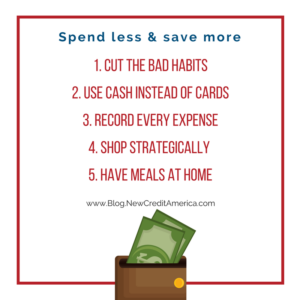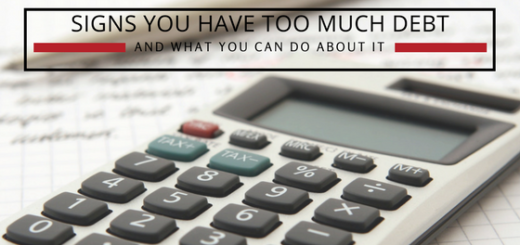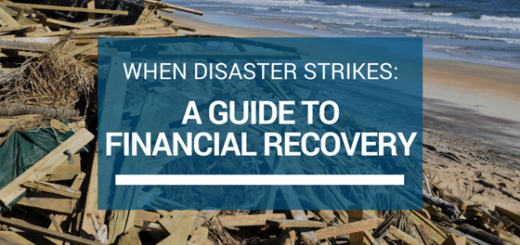Five Ways to Spend Less and Save More
 When your money is tight, the idea of being able to build a savings account can seem like nothing more than a pipe dream. You already have your living expenses, your bills and payments—not to mention unprecedented or emergent expenses that occur occasionally. When it is all said and done, putting money aside doesn’t seem possible. Especially if you’re also dealing with debt. However, having a plan to cut down spending and up your savings is always possible—regardless of your situation. Adjusting your habits to save more can make a huge difference, especially if you’re working to pay off debts.
When your money is tight, the idea of being able to build a savings account can seem like nothing more than a pipe dream. You already have your living expenses, your bills and payments—not to mention unprecedented or emergent expenses that occur occasionally. When it is all said and done, putting money aside doesn’t seem possible. Especially if you’re also dealing with debt. However, having a plan to cut down spending and up your savings is always possible—regardless of your situation. Adjusting your habits to save more can make a huge difference, especially if you’re working to pay off debts.
Don’t wait to start your savings. It can be a lifesaver during an emergency and a great cushion to fall back on. Here are our top tips for how to spend less and save more.
Trim the fat.
Chances are you’re spending some of your hard-earned money on things you don’t truly need. Evaluate your needs against some of your habits and adjust. For example, are you paying too much for cable and internet? Many companies charge a hefty amount of money for channels you have never watched, and likely never will. Look for a plan that better fits your entertainment needs and is less of a drain on your monthly expenses. Other habits that could be costing you include buying a coffee every day, eating lunch out, expensive gym memberships or other subscriptions. Cutting out these small habits can lead to a big change in the money you have left over each month.
Cash is king.
If you’re having trouble managing credit card debt or are typically unable to pay off your cards each month, try to avoid further damaging your finances. Start paying what you can with cash. Not only will you notice how much faster your money dwindles (hopefully prompting you to adjust some habits), but you’ll also avoid spending more than what you have and start prioritizing what you’re willing to spend your money on.
Write it down.
It might feel obnoxious or time-consuming, but keep a written record of every dollar you spend for a month. Seeing everything on paper will help you see where your money is going, identify areas where you are needlessly overspending and help you keep track of your progress over time.
This is also the first step to creating a monthly budget. Once you see how much you see how much you are spending, you can start keeping track of your progress every month, and determine how much money to set aside for savings.
Be strategic during your grocery trips.
You don’t have to go as far as the show “Extreme Couponing” does, but using coupons can make a difference in how much you spend. Pro tip: use coupons only for items you regularly buy regardless of coupons.
You can save even more by choosing only what’s on sale at your grocery store. Check the weekly ads that typically get stuffed in your mail box to see what items are on sale before you hit the grocery store.
Another good tip is to shop generic brands at your grocery store. Brand loyalty can be great, but when it comes to buying food it’s ultimately a costly habit. You’ll get nearly the same food in a larger quantity at a lower price if you stick to your grocery store’s brand.
Put the money you save during your grocery store trip aside for your savings.
Eat at home.
Going out to eat can be a fun treat, but doing it often can be extremely costly (and make it feel like less of a treat!). Save your money by eating your meals at home and bringing in lunch to work rather than eating out. Making your meals for the week on Sunday evenings can help you feel organized and prepared for the week. It will take some time on Sunday, but you’ll save a lot more time during the week. Plus, you’ll be less tempted to get takeout or have dinner out if you already have food ready at home.


